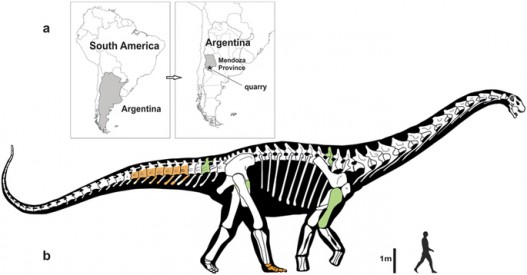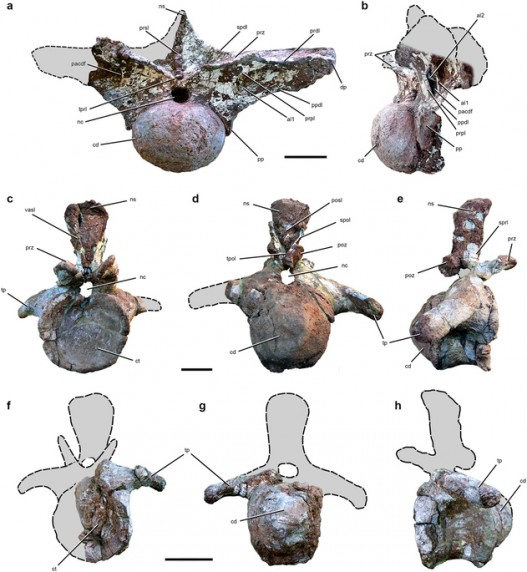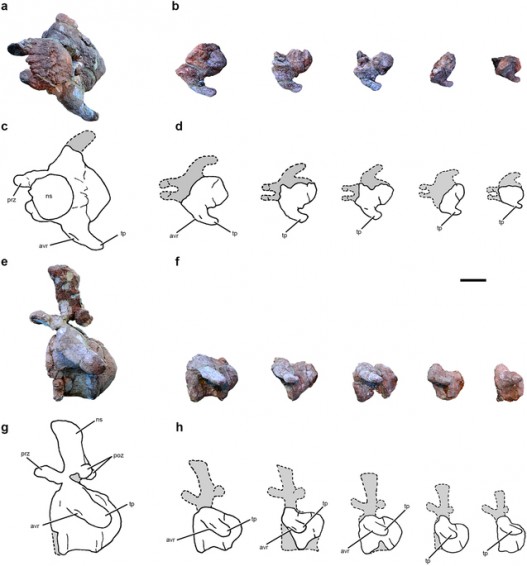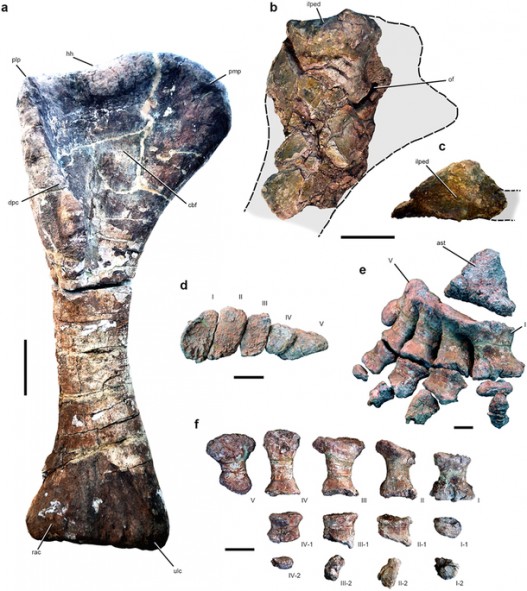A gigantic new dinosaur from Argentina and the evolution of the sauropod hind foot
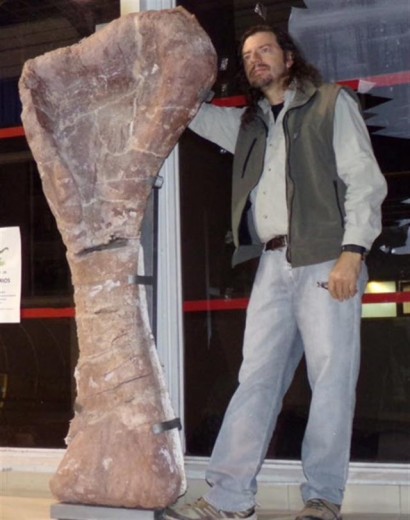 Titanosaurian sauropod dinosaurs were the most diverse and abundant large-bodied terrestrial herbivores in the Southern Hemisphere landmasses during the Cretaceous Period1,2,3,4. Their fossils have been discovered on all continents, and titanosaur species comprise approximately one third of known sauropod diversity1. Some taxa are regarded as the most massive terrestrial animals known to science4,5,6, whereas others were apparently no heavier than modern cattle7. Titanosaurs were particularly diverse during the Late Cretaceous, and encompass a taxonomic richness that rivals that of the hadrosaurid ornithischians that dominated Northern Hemisphere palaeoecosystems at the same time. Anatomical and phylogenetic analyses of titanosaurs form the foundation for insights into the evolution and palaeobiology of this diverse dinosaur group, but such studies have been hampered by missing data, since the osteology of many titanosaurian species is not well understood. Fortunately, this situation is beginning to change with recent discoveries of well-preserved specimens of taxa such as Tapuiasaurus from the Early Cretaceous of Brazil8, Dreadnoughtus4, Futalognkosaurus6, and Mendozasaurus9 from the Late Cretaceous of Argentina, and Rapetosaurus from the latest Cretaceous of Madagascar10. Nevertheless, some areas of the titanosaurian skeleton remain poorly documented, particularly the skull, posterior-most caudal vertebrae, and pes3. This problem is especially pronounced in the exceptionally gigantic members of the clade, in which these skeletal regions remain all but unknown. Here we describe a new Late Cretaceous sauropod, Notocolossus gonzalezparejasi gen. et sp. nov., that offers important new data on the pedal morphology of giant titanosaurs. Specimens of Notocolossus were discovered in southern-most Mendoza Province, Argentina (Fig. 1a) by the senior author (B.J.G.R.), and are housed at the Laboratorio de Dinosaurios of the Universidad Nacional de Cuyo (UNCUYO-LD) in the city of Mendoza, Argentina. |
